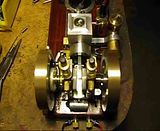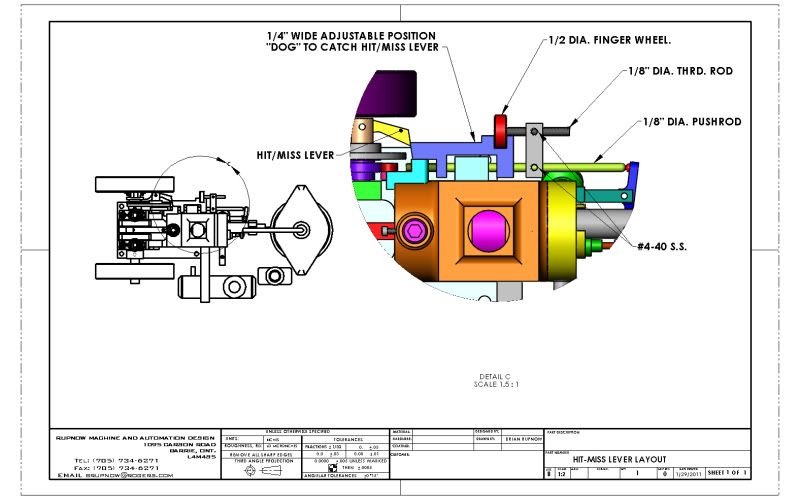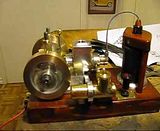Although this is not really a "Work in progress" at this point, those of you who followed this thread may find this of interest. As you may remember, the main bearings for this engine were originally made from bronze. To my dismay, (and puzzlement) they wore out before I even had the engine running. I built a second set of main bearings from brass, and they seemed to work fine. This was very curious, because bronze is a far superior bearing material. I have ran the engine a bit every day, as I am rather intrigued by it, and now, Lo and Behold, the brass main bearings have gone the way of the bronze main bearings. They are severely worn, and you can actually grab a flywheel and "wiggle" it around due to the slop in the bearings. The bearings have lubricators on them, and I can see that they are using oil, so lack of lubrication has not caused this problem. I can only conclude that my built up and silver soldered crankshaft must have enough "distortion" in it to cause this accelerated bearing wear. I now have to come to some reasonable fix for this situation. I could build another complete crankshaft, but seeing as the 7/16" bearing bosses are actually machined seperately as sleeves and slid onto the 3/8" diameter crankshaft and loctited in place, I may try another approach. The existing crankshaft still has the countersinks in each end that were used to turn it between centers to clean up excess silver solder. I may heat up the existing bosses to break the loctite bond, slide them off, and install new bosses 1/2" in diameter and loctite them in place. After a 24 hour cure time, I will then set the crankshaft up between centers and using a lathe dog to transmit torque, turn the new sleeves "in place" to the required 7/16" diameter. That, along with another set of main bearings SHOULD solve the worn bearing issue once and for all.---Brian








